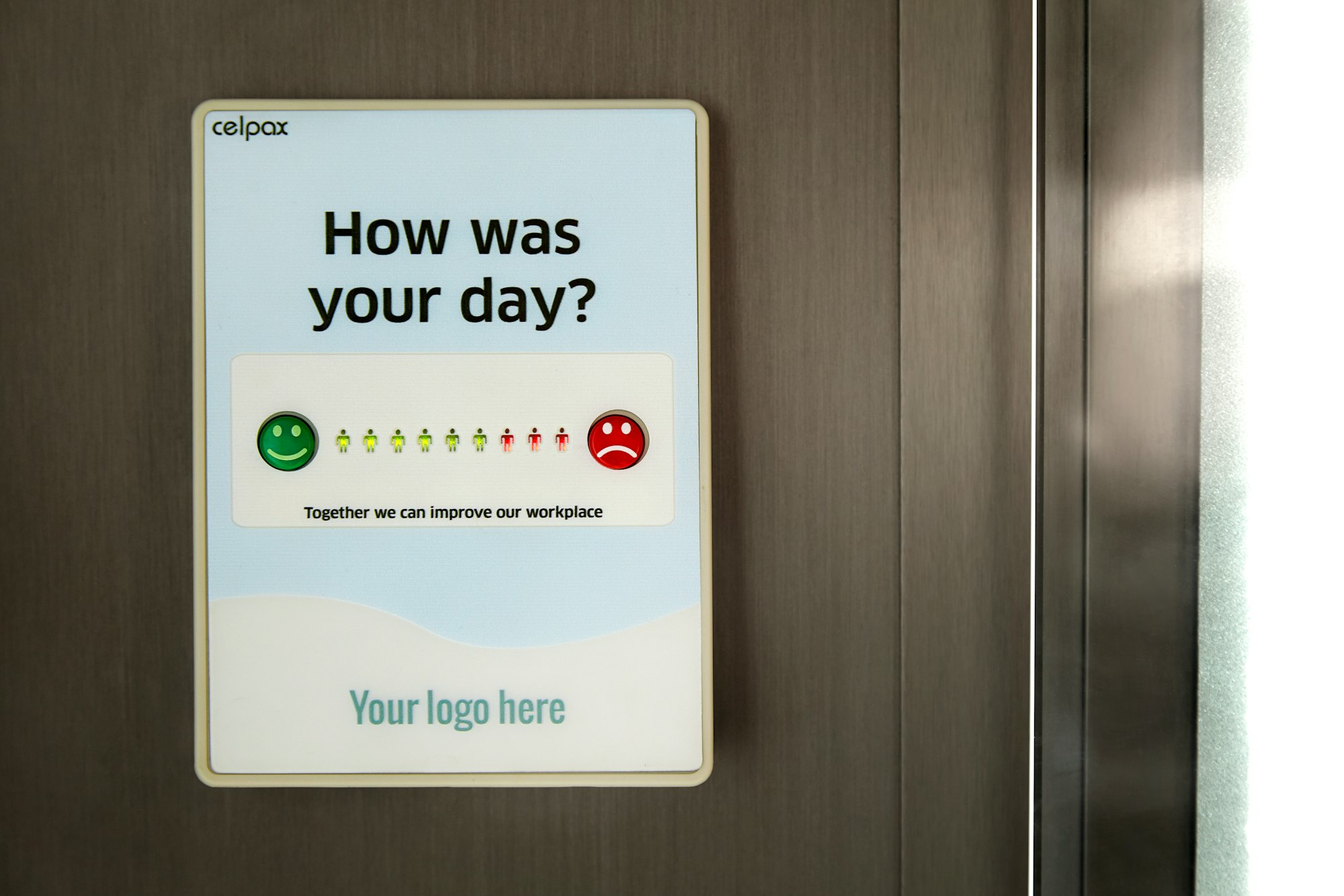7 Tips to Improve your Customer Service
No business can survive without customers. They are the lifeblood of your business. It stands to reason that you have to do everything within your power to keep them happy. Yet, even some of the biggest companies on the planet struggle to get their customer experience right.
The good news is that it is possible to improve your customer service. The bad news is that you won’t be able to provide superior service without a solid strategy.
In this article, we will give seven tips that will help you improve your customer experience strategy and set your company ahead of the competition. Because delighting your customers is a surefire way to distinguish your brand in the market.

Tip 1: Get feedback from your customers
Satisfying your customers should be a primary goal for most companies. But the question becomes, how do you know what your customer wants? And how would you measure your success in satisfying their desires?
The answer is to get proper feedback from your customers. First off you need to ascertain what their perception is of your brand. Negative remarks about your brand will already point the way to improving your customer experience.
When you get customer feedback, you will also get a picture of their expectations when they shop with you—and how to meet and even exceed these expectations.
The feedback will show areas that are working well, as well as those pain points that need to be addressed. This is called a feedback loop. You need to get continuous feedback from your customers after every interaction from them.
Then you need to act on that data to ensure that their next experience with you will be more positive. Don’t waste your time by gathering data from customers and then not acting on that data. You cannot simply offer lip service to improving your customer experience. You have to show them that you care by taking their suggestions and criticism seriously.
And don't just stop at getting feedback from customers, either. You need to probe your employees for their thoughts and suggestions on the customer feedback you received. Often employees will be able to give you good insight into why it was difficult to provide excellent service in the first place—and what your company can do to help them achieve that goal.
For example, staff members could alert you of company policies or certain processes that are not aligned with the needs of your customers. Or there could be organisational issues where departments don't communicate effectively which causes delays in resolving customer queries.
You should look into leveraging the power of technology to collect customer data, analysing the data into actions that can be taken to improve your customer experience and then implementing these steps to put your customers first.
There are several communication channels at your disposal to reach out to customers to get their feedback and input. These would include initiating a live chat, contacting them through your company app, or even using chatbots.
It's very useful to get feedback from customers after every touchpoint. The goal is to assess their experience with your company straight away and determine how satisfied they were with the interaction.
In this way, you will be able to continuously improve on the type of service you render to customers. If you're able to meet your customers' expectations, resolve any issue they might have with their transaction and resolve all of their queries, you're well on your way to customer service excellence.
By just the mere fact of collecting customer feedback, you communicate to them that you value them and that their experience with your company is important to you. This nurtures customer loyalty to your brand. It will go a long way to smooth out any problems they might have had with your service—and gives you further opportunities to generate sales.

Tip 2: Offer a seamless experience
Omnichannel is all the rage in retail these days. But few companies manage to build an omnichannel experience for their customers that are truly seamless—where they receive consistent service across all your channels.
When customers interact with the different parts of your company, they don't want to repeat their story over and over again to different sales representatives. They want every new member of your team they meet to already have access to their conversation history.
This is called context. When someone from your team starts a conversation with a customer, they need to already have background information about the customer. For example, they need to know who they are, what email communication has been sent back and forth, what store items are in their online shopping cart, and what the results were of their previous conversation with your team.
Customers want this context and history to accompany them as they switch channels and interact with different departments in your company. Without this ability, you will never be able to deliver a seamless customer experience in an omnichannel environment.
The problem is usually that different departments have to handle different aspects of a customer's queries. Interdepartmental communication is notoriously ineffective in the corporate environment. Which means that you have to focus on opening up effective means of communication between the different teams in your company. Otherwise your customers will just keep getting frustrated about the lack of teamwork between company groups and move on to the competition.
The solution is to implement customer service software with omnichannel capability. The software should be able to direct customers directly to the correct department—even if they reside in different channels.
The receiving team should then get an instant update of the customer's previous interactions so that their problems can be resolved as quickly and painlessly as possible.

Tip 3: Provide self-service alternatives
It’s always a good idea to provide a couple of self-service options on your website and app which will enable customers to solve the most common problems on their own.
Often customers see it as too much of a hassle to contact customer support for minor issues. If they can simply login to your website and resolve the issue on their own, it will save them a lot of time and effort.
The key here is to provide them online content that is relevant to their past interactions with your company. The website should serve up data-driven articles and suggestions that will guide them along the process.
A modern invention that can help here are chatbots. This technology is able to provide instant answers to customer queries and direct them to the relevant pages on your website that will resolve their issues.
You have to ensure that all the articles and links you provide on your website are current. They also need to be accurate. If you mislead a customer with outdated information, their frustration with your company will only increase—not diminish.

Tip 4: Train your staff correctly
The people on your staff who interact directly with customers have to be trained properly to give a superior customer experience. You cannot simply assume that they will already understand customer needs and how to meet them effectively. They have to be trained.
Remember that those people are effectively the face of your brand where your customers are concerned. Their interactions with the public will shape their impression of your company—and first impressions last.
Which means you have to set a standard in your company of what type of service you want to provide. You also need to implement training programs and programs that will enable your staff members to achieve this level of service.
You have to institute regular training programs for all staff members who interact with the public. This would include members of your sales team, staff members who provide customer support, and also your marketing department.
So what should be included in your staff training program? Firstly, you have to ensure that they know your product lines inside and out. You would be surprised how few sales representatives actually know the products they're selling to customers.
The core of providing good customer service is pointing them to the correct product that will meet their needs and then answering any questions they might have about the product.
Your staff members have to understand your business and what you sell. Taking your staff through regular, intensive product training will benefit your company in the following ways:
- The staff members will be better equipped to assess customer needs and offer them better solutions to their problems.
- They will be able to assist customers with more confidence since they will actually know what they're talking about.
- This will also improve the speed with which your staff members will be able to respond to and solve customer queries.
- Your public-facing staff will learn how to deal with customers more effectively and resolve their complaints and inquiries in an efficient and effective manner.
Besides giving your staff training on your products and business, you also need to train them how to interact with customers effectively. Sadly, good communication skills are often seriously lacking in customer-facing personnel. This is something that you have to impart to them as a company.
For example, staff members need to be trained in basic customer service etiquette. They need to be shown how to deal with a difficult customer with patience.
Not everyone has a natural skill to build empathy with a stranger, but there are techniques that you can teach your staff members to build a positive emotional connection with customers. This will have a marked effect on your customer service level and will go a long way to building customer loyalty.
Training your team members in the soft skills to deal with customers effectively will have the following benefits to your company:
- Staff members will be able to better evaluate a customer's problems and resolve their issues a lot faster.
- You will be able to significantly reduce the number of customer interactions that is needed to resolve a customer query.
- This will shorten the sales cycle and improve the ratio of actual sales conversions achieved from every customer interaction.
- Your staff will deal with customers in a more personable way which will make customers feel valued and important to your company. This builds trust in your company and nurtures loyalty to your brand.

Tip 5: Utilise the power of AI
Often you have to bite the bullet and make use of the latest technology to stay ahead of the competition. One of these new technologies that are revolutionising customer interactions at the moment is AI-powered chatbots.
Although chabots can never replace actually talking to a live person, they are extremely useful to resolve the most common issues that customers might have. They are able to quickly perform a number of repetitive customer support tasks.
Some of the biggest brands on the internet are embracing AI chatbots. Just in 2020 to 2021 alone, companies have seen a 50% rise in the number of customer queries that were able to be resolved by chatbots.
AI-technology is able to initiate more interactions with customers as they're on-call 24/7 to respond to customer queries. When the customer has a difficult question or wants to achieve something beyond the abilities of the AI, the conversation can seamlessly be transferred to a live agent to resolve their issue.

Tip 6: Offer proactive support
You have to approach customer support in a proactive way. This means that you have to anticipate any problems they might have with your products and services and reach out to them ahead of time to reassure them that you're working to resolve the problem.
For example, if there are going to be technical breakdowns of your website or other services, send them a message ahead of time to tell them what you're doing to inconvenience them as little as possible.
Furthermore, you have to anticipate the needs of your customers and resolve any issue before it even becomes a problem. This will give your customers the sense that you're looking out for them and that you're being transparent about any potential problem. This builds tremendous trust in your brand and engenders loyalty.
You can also use technology to deliver proactive experiences for your customers. For example, a chatbot can already be made available on the checkout page of your e-store to answer any customer queries about their order. Or you might send out an email to all customers ahead of time if you're going to do routine maintenance on your website or if there will be a breakdown of your services.

Tip 7: Use data to improve customer support
One of the main benefits of the data-driven marketplace is that all customer interactions are logged. Since so much of the communication with customers is done electronically these days, it's easy to build a detailed customer profile.
All of this data should be used to improve your customer support. For example, the data will give you a strong sense of how effectively you're serving your customers. You need to determine how satisfied your customers are with the support they're getting from your organisation.
The data will also point to changing consumer behaviour and shopping trends that you will be able to use to predict future demand.
This means that you have to analyse the data to get a clear picture of your customer base and their needs. The data will also give you an objective assessment of your customer support processes and staff. It will also highlight the areas that frustrate your customers and need to be improved.
When you have a clear picture of your customers' needs and goals you will be able to serve them better. You will also be able to anticipate their problems and solve them before it becomes an issue.

Conclusion
In the competitive world of retail, you need something to set you apart from the competition. Often the way to get a competitive edge is to provide superior customer service.
Research has shown that more than 80% of customers are willing to pay more for a product if it comes with superior customer service. Which means that improving your customer service can have a measurable effect on your bottom line.
Whether you're a big global conglomerate, or an internet startup, getting the customer experience formula right is crucial to your future survival and success. And with the right customer service strategy in place, you will be able to build a strong, loyal customer base. You will also be able to improve sales and boost the profitability of your company as a whole.